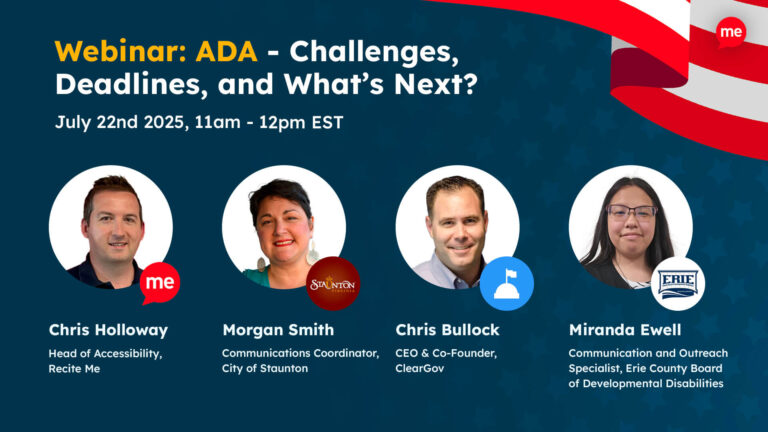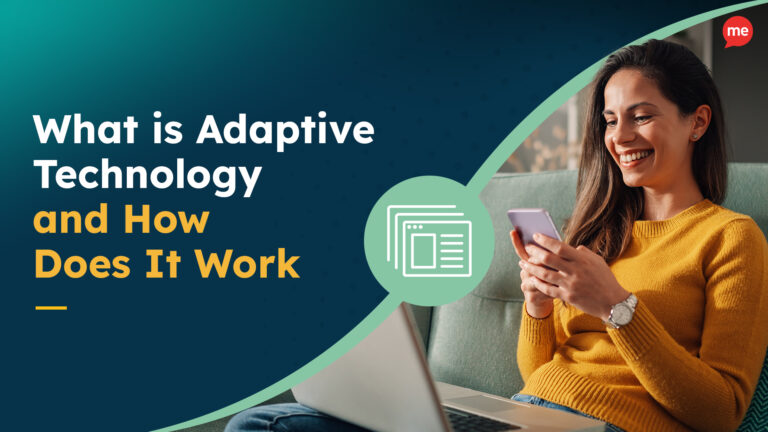Get A Free ADA Compliance Audit Of Your Website
Download NowCan you remember the last time you reached the end of a day without going online to look for information, access health, work, or education resources, manage your accounts, or shop? No, neither can we!
As online interactions become increasingly integral to everyday life, the need to bridge digital accessibility gaps has become more pronounced. Along with a handful of other states, Indiana stands at the forefront of addressing online inclusion through the enactment of robust accessibility legislation.
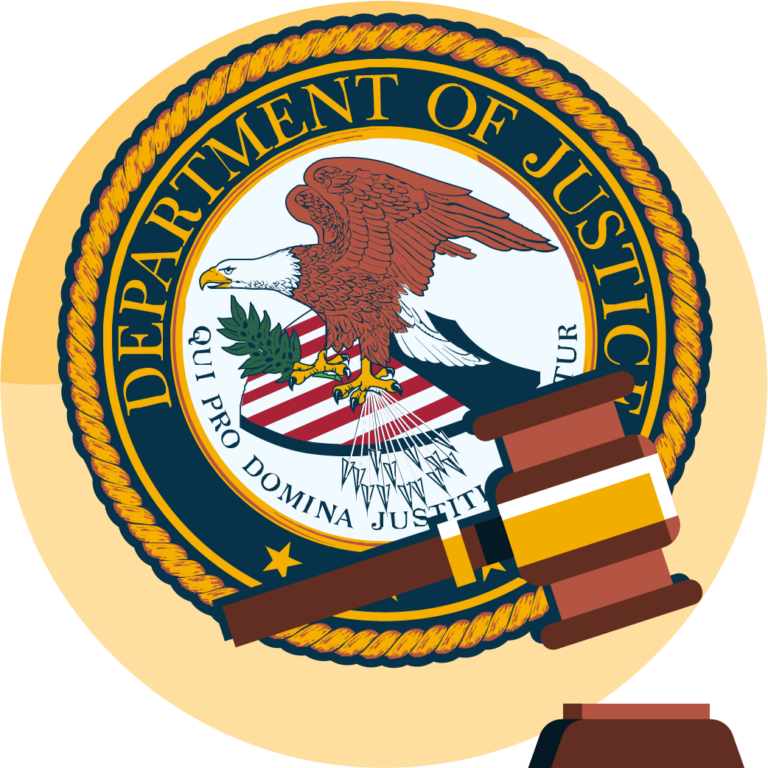
Web Accessibility Laws in Indiana
In addition to nationwide federal legislation, Indiana-based organizations are expected to comply with stand-alone state guidelines to ensure everyone, regardless of ability or disability, can access online resources. Let’s examine each piece of legislation in detail.
Indiana Code 4-13.1-3
Indians State is committed to ensuring all website visitors can obtain public information and services conveniently and independently. As such, Indiana Code 4-13.1-3 was created to assure that all state information technology equipment, software, and systems used by state employees or members of the public are compliant with Section 508 of the Federal Rehabilitation Act of 1973.
As Indiana Code 4-13.1-3 is based on Section 508 compliance, various aspects of digital accessibility are covered, including:
- Website design – E.g., clear headings, logical organization, and consistent navigation menus.
- Content presentation – E.g., alternative text for images, captions for videos, and transcripts for audio content.
- Interactive features – E.g., keyboard navigation, clear clickable areas, and accessible forms.
The Americans With Disabilities Act
Initially intended to eliminate physical accessibility barriers for individuals with disabilities, the Americans With Disabilities Act (ADA) now applies equally to digital spaces, acknowledging that websites and online platforms serve as extensions of physical environments. Across the three titles that apply to website accessibility, both government agencies and public-facing organizations are covered:
- ADA Title I mandates accessibility in federal employment practices.
- ADA Title II focuses on the accessibility of public services and programs offered by state and local governments.
- ADA Title III extends to public-facing private entities, mandating full and equal online access to goods, services, facilities, privileges, etc., for individuals with disabilities.

Section 508 of the Rehabilitation Act
Section 508 of the 1972 Rehabilitation Act strives to dismantle digital barriers by allowing federal employees and members of the public to engage seamlessly with government resources. It mandates that all proprietary government electronic and information technology (EIT) be accessible to individuals with disabilities. Encompassing a broad range of websites, software, and other digital assets, Section 508 compliance ensures that:
- Federal employees have unfettered access to digital resources, fostering an inclusive and equitable work environment.
- Members of the public with disabilities have equitable access to federal information and services.

Free Accessibility Check of your Website
Finding accessibility issues is now easier than ever. Recite Me offers a free automated scan of your website’s homepage to highlight non-compliance. You’ll get recommendations on how to fix them, helping to improve your accessibility score.
Which Businesses Do Indiana Web Accessibility Laws Apply To?
While the majority of Indiana web accessibility legislation applies primarily to federal agencies and public sector organizations, private entities can still be directly impacted under Title III of the ADA. Plus, section 508 criteria may also extend to companies that:
- Perform direct or indirect subcontracting jobs for government agencies.
- Receive grants for non-profit causes.
- Receive funding for public-facing services in for-profit sectors.
This criterion significantly extends the range of businesses that may need to align their digital accessibility practices. Types of business that could be affected include, but are not limited to:
- Technology providers
- Software developers
- Website designers
- Charities
- Conservation groups
- Research institutions
- Community development organizations.
- Financial institutions
- Healthcare providers
- Schools, colleges, and universities
- Transport companies
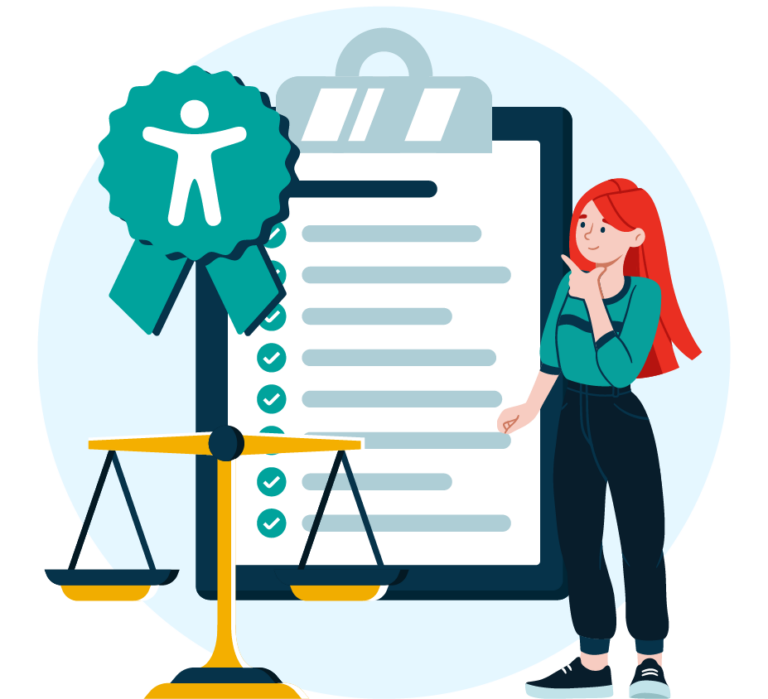
What are The Risks and Consequences of Non-Compliance?
At this time, there are no financial penalties attached to non-compliance with Indiana Code 4-13.1-3. Rather, if any entity subject to the requirements is found in breach, the organization must submit a plan to the state office with a proposed timeline for compliance. The plan must provide alternative means of accessibility during the period of noncompliance.
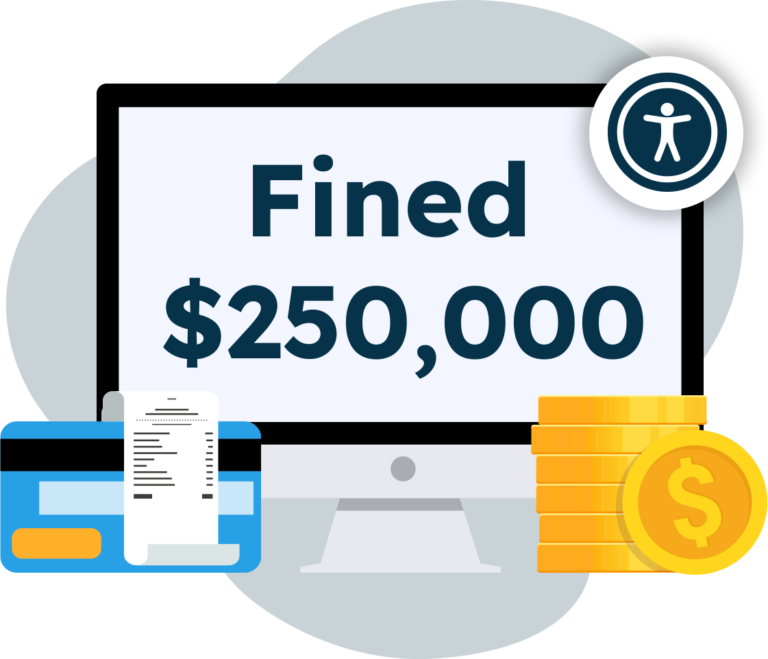
In contrast, organizations that fail to comply with ADA or Section 508 criteria may face financial penalties. Non-compliance may also result in costly lawsuits and settlements, and entities that receive government funding may have their contracts revoked and be placed under increased regulatory scrutiny going forward. Additionally, companies that exclude the disabled population may encounter indirect financial repercussions due to:
- Limited market reach
- Loss of revenue
- Reputational damage
- Reduced brand loyalty
Notable Digital Accessibility Lawsuits in Indiana
The number of website accessibility lawsuit filings continues to rise exponentially year-on-year, and Indiana ranks in the top ten states for the volume of digital accessibility cases making their way to federal courts.
Common Compliance Complaints in Indiana Digital Accessibility Lawsuits
An analysis of the primary causes for Indiana court filings highlighted the following common criteria:
- Unlabeled dropdown menus, promotional images, checkboxes, and dialog boxes.
- Lack of keyboard navigation.
- Incompatibility with screen reader software.
- Insufficient color contrast.
- Checkout forms without indicated required fields or error suggestions.
- Empty button elements.
Examples of Indiana Digital Accessibility Lawsuits
Many cases don’t proceed all the way to federal court. There are several reasons for this, including voluntary withdrawals and closed-record out-of-court settlements. However, the sheer volume of cases and the potential for costly PR damage and legal fees should give organizations across all sectors food for thought. Here’s a short list of some recent web accessibility cases to give you an idea of the broad scope of business sectors that may be affected:
- Bradley vs Northern Safety Co., Inc
- James Martin vs Tri-State Valet, Inc
- Christopher Meyer, Sarah Meyer and The National Federation of the Blind, Inc. vs Indiana Family and Social Services Administration
- Demieli Wright vs Fungi Perfecti LLC
- Demieli Wright vs Aleia’s Gluten Free Foods, LLC
- Demieli Wright vs Blueair, Inc
- Demieli Wright vs Hyper Ice Inc
- Demieli Wright vs The Finish Line, Inc
- Demieli Wright vs RDX Sports LLC
- Demieli Wright vs Nuun & Company Inc
- Demieli Wright vs Thread Experiment, LLC
- Demieli Wright vs Tile, Inc

As you can see, many cases were brought by the same individual, serving as a valuable reminder that excluding just one person can have severe repercussions.
Stay ahead of the game when it comes to Digital Accessibility laws and compliance in the United States. Learn about all the different federal and state-level regulations, see real examples of web accessibility lawsuits in different regions and discover a 7-step action plan for building accessible websites.
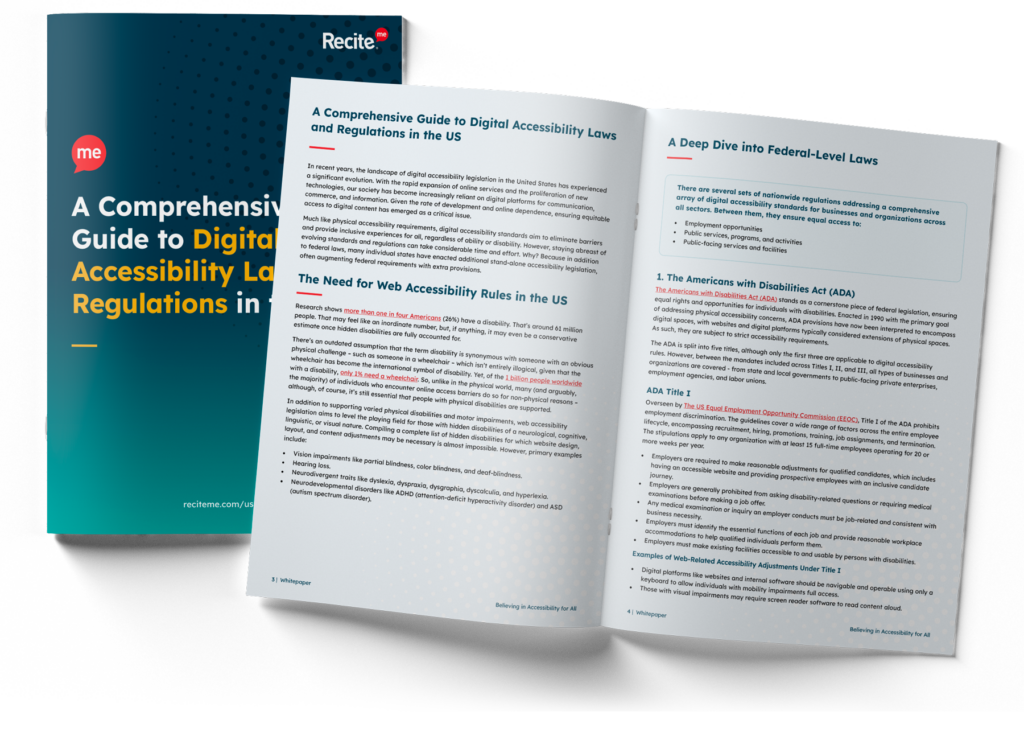
The Importance of WCAG Compliance
The Web Content Accessibility Guidelines (WCAG) are a set of internationally recognized standards developed to ensure the accessibility of web content for individuals with disabilities. There are several iterations, with WCAG 2.1 (published in 2018) being the most current.
The guidelines are organized into different levels of conformance, each indicating the degree of accessibility achieved:
- Level A – Criteria you must cover to provide a basic level of accessibility on your website.
- Level AA – Criteria you should cover to meet an industry-accepted standard of accessibility.
- Level AAA – Criteria you could cover to offer enhanced accessibility.
Most obligations laid out in the ADA and Section 508 (and therefore also Indiana Code 4-13.1-3) hinge on WCAG 2.0 Level AA compliance. However, as WCAG 2.1 is the most thorough and up-to-date version (for now, WCAG 3.0 is on the way soon!), WCAG 2.1 Level AA is recommended – especially given that over 75% of all federal claims now reference WCAG 2.1AA.
How to Make Your Website Compliant with Indiana Web Accessibility Laws
As website content evolves continuously, ensuring continued adherence to legal standards can seem daunting. However, investing in accessibility software can remove many of the inherent challenges and complexities. It’s here that solutions like Recite Me’s suite of accessibility-on-demand tools can play an integral role.
Ensure Compliance with WCAG 2.1
The Recite Me Accessibility Checker helps organizations meet WCAG 2.1 Level AA requirements, ensuring compliance with all ADA, Section 508, and Indiana Code 4-13.1-3 criteria.
Using a 4-step process comprising 396 separate tests, our software scans, finds, fixes, and tracks compliance criteria, automatically prioritizing tasks based on Level A, AA, and then AAA compliance for the most significant impact in the shortest timeframe.
Schedule a free demonstration or run a free scan today!
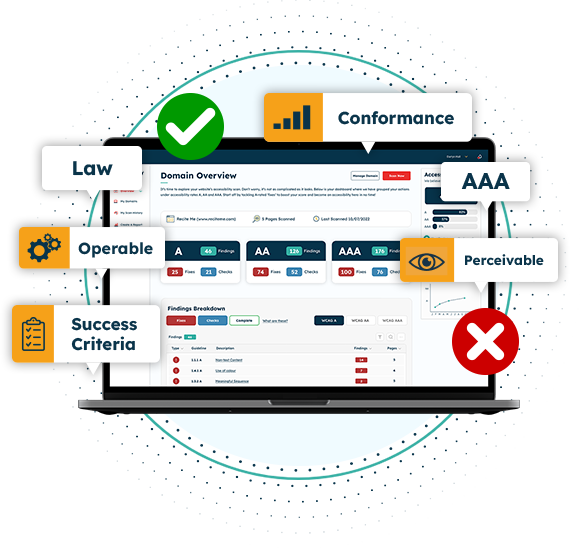
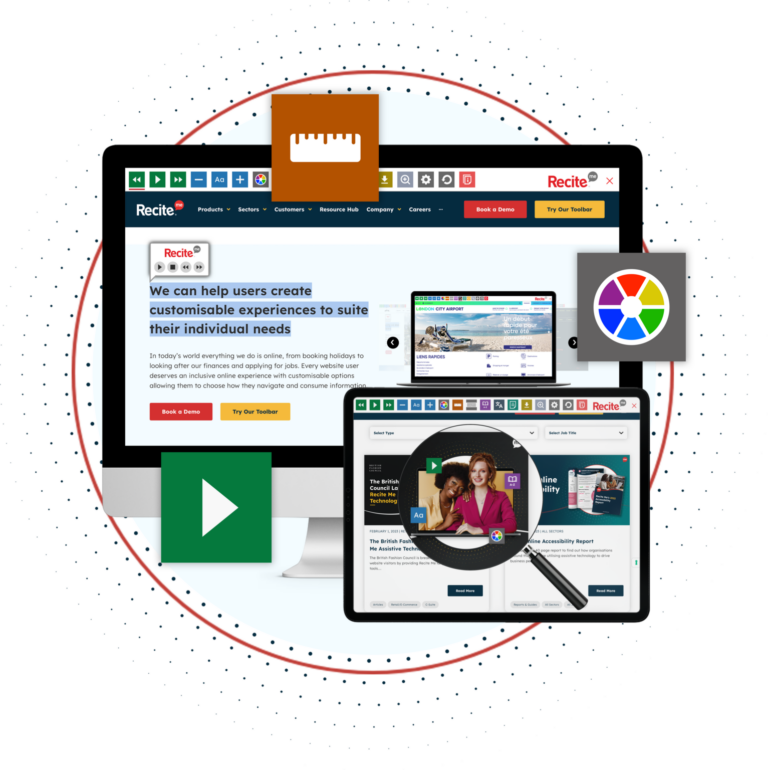
Accounting for Individual Differences
It’s essential to note that making your website accessible from a compliance perspective doesn’t necessarily make it inclusive. You also need to account for individual usability issues.
The easiest way to do that is with software like the Recite Me Toolbar, which allows website visitors with sight loss, cognitive impairments, learning difficulties, physical disabilities, and varying linguistic needs to make custom adjustments for ultimate ease of use. Customization tools account for individual preferences spanning font, color, language, text-to-speech, and text-to-audio preferences, and more.
Schedule a free demonstration, or try the toolbar today!

